Cover
Contents
Acknowledgments
Introduction
About the Authors
Part 1 Introduction
Chapter 1 Introducing CWM: Model-Based Integration of the Supply Chain
Integrating the Information Supply Chain
Components of the Information Supply Chain
The Economics of Integrating the ISC
CWM: Model-Based Meta Data Integration
The Model-Based Approach to Meta Data
An Overview of CWM
Summary
Chapter 2 An Architectural Survey of CWM
The CWM Metamodel Packages
The Object Model Layer
The Core Package
Behavioral Package
Relationships Package
Instance Package
Foundation Layer
Business Information Package
DataTypes Package
Expressions Package
Keys and Indexes Package
Software Deployment Package
TypeMapping Package
Resource Layer
Object Package
Relational Package
Record Package
Multidimensional Package
XMLPackage
Analysis Layer
Transformation Package
OLAPPackage
Data Mining Package
Information Visualization Package
Business Nomenclature Package
Management Layer
Warehouse Process Package
Warehouse Operation Package
Key Architectural Concepts: Extending CWM
Meta Data Reuse and Extension Based on Inheritance
Lightweight Extension Mechanisms: Stereotypes and TaggedValues
Summary
Chapter 3 Modeling Meta Data Using CWM
UML
Building Blocks and Well-Formedness Rules
Static Structure Modeling
Model Management
Meta Object Facility
The MOF Model
The CWM Metamodel
How CWM Uses Inheritance to Achieve Reuse
How Meta Data Links to Physical Data Resources
How Resource Packages Support Instance Objects
Using CWM to Model Meta Data
Modeling Relational Meta Data
Modeling Record-Based Meta Data
Modeling Physical Data Resources
Modeling Transformation Meta Data
Modeling OLAP Meta Data
Summary
Chapter 4 Meta Data Interchange Patterns
Introducing Meta Data Interchange Patterns
The Need to Establish a Common Context for Meta Data Interchange
The Need to Place Boundaries on Solution Extents
The Pattern-Based Approach to Meta Data Interchange
Formal Definitions of Meta Data Interchange Pattern Concepts
Developing Meta Data Interchange Patterns for CWM
Steps for Developing Interchange Patterns
Step 1: Identify the interchange problem to be solved
Step 2: Propose a pattern that solves the problem
Step 3: Identify several scenarios in which the proposed pattern would be used
Step 4: Determine how the proposed pattern reuses,or otherwise relates to, known patterns
Step 5: Identify the structural classification of the proposed pattern
Step 6: Identify the usage category of the proposed pattern
Step 7: Identify the metamodel projection
Step 8: Determine any restrictions on instances of the projection
Step 9: Determine the parameters for binding pattern realizations
Step 10: Validate the pattern
Developing and Publishing a Pattern Specification
Developing a Fundamental Pattern: Unit of Interchange
Identify the interchange problem to be solved
Propose a pattern that solves the problem
Identify several scenarios in which the proposed pattern would be used
Determine how the proposed pattern reuses,or otherwise relates to, known patterns
Identify the structural classification of the proposed pattern
Identify the usage category of the proposed pattern
Identify the metamodel projection
Determine any restrictions on instances of the projection
Determine the parameters for binding pattern realizations
Validate the pattern
Summary
Part 2 Introducing the Vertical Models
Chapter 5 Data Warehouse Management Model
The Operational Data Store Scenario
The Exemplar Operational Data Store
The Relational Meta Data
Database Meta Data
ResultSet Meta Data
The CWM Relational Package
CWM Relational Dependent Classes and JMI Mappings
Exporting Relational Meta Data Using CWM
Simple Type
Catalog and Schema
Table and Column
Primary and Foreign Keys
Index
Types of Meta Data Not Exported
The CWM XMI File
Exporting Relational Data Using CWM
QueryColumnSet
RowSet, Row, and ColumnValue
The CWM XMI File
The ETL Scenario
The Exemplar Data Warehouse
The ETL Process Meta Data
The CWM Transformation Package
The CWM WarehouseProcess Package
Exporting ETL Meta Data Using CWM
The CWM XMI File
Summary
Chapter 6 Dimensional Model
The Logical Model
Dimensions, Attributes, Levels, and Hierarchies
The CWM Model
Defining the Dimensions and Attributes
Defining Levels and Level Attributes
Defining Hierarchies and Hierarchical Attributes
Add the Dimensions to the Schema
Defining Cubes and Measures
Add the Cubes to the Schema
Defining Keys
Adding Keys to the Dimensions
Adding Keys to the Levels
Adding Keys to the Hierarchies
Adding Keys to the Cubes
The Physical Model
A Relational Star-Schema
Defining the Physical Objects
Defining the Tables and Columns
Adding Primary Keys and Foreign Keys
Physical Deployment Models
Creating the DeploymentGroup
The CWM Mapping Model
Mapping the Logical Model
Mapping the Physical Model
Creating a Second Deployment
The Multidimensional Metamodel
The Express Model
Creating the Express Objects
Adding the Second Deployment
Summary
Chapter 7 Web-Enabled Data Warehouse Model
Introducing the Web-Enabled Data Warehouse
Merging the Web and the Data Warehouse
Web-Enabled Dimensional Model
The Logical Clickstream Dimensions
CWM Packages and Interfaces
Building the Time Dimension
Building the Customer Dimension
Building the Product Dimension
Building the Page Dimension
Building the Event Dimension
Building the Session Dimension
Building the Referral Dimension
Building the Causal Dimension
Building the Entity Dimension
The Logical Clickstream Analysis Cubes
Session Analysis Cube
Page Analysis Cube
Aggregation Cube
New Meta Data Patterns Developed and Cataloged
Local Stereotype, Version 1.0
URL
Contributor
Structural Classification
Usage Category
Intent
Also Known As
Motivation
Applicability
Projection
Restriction
Usage
Parameters
Commentary
Consequences
Known Uses
Related Patterns
Sample Solution
Local Type System, Version 1.0
URL
Contributor
Structural Classification
Usage Category
Intent
Also Known As
Motivation
Applicability
Projection
Restriction
Usage
Parameters
Commentary
Consequences
Known Uses
Related Patterns
Sample Solution
Surrogate Key, Version 1.0
URL
Contributor
Structural Classification
Usage Category
Intent
Also Known As
Motivation
Applicability
Projection
Restriction
Usage
Parameters
Commentary
Consequences
Known Uses
Related Patterns
Sample Solution
Star-Join, Version 1.0
URL
Contributor
Structural Classification
Usage Category
Intent
Also Known As
Motivation
Applicability
Projection
Restriction
Usage
Parameters
Commentary
Consequences
Known Uses
Related Patterns
Sample Solution
Summary
Chapter 8 CWM Metastore
Building a CWM Metastore
Object-to-Relational Mapping Patterns
A Field Guide to Object-to-Relational Mapping Patterns
UML Notation Overview
Relational Table Notation
Manipulating Data in Metastore Tables
Preserving CWM's Object Structure
Data Type Mapping Patterns
Simple Data Type Pattern
Enumerated Data Type Pattern
Class-based Data Type Pattern
Class Mapping Patterns
Attribute Mapping Patterns
Inheritance Pattern
Association Mapping Patterns
One-to-One Association Pattern
One-to-Many Association Pattern
Many-to-Many Association Pattern
Using Association Patterns
Enforcing Association Multiplicities
Reference Mapping Patterns
MetaStore Services
Transaction Management Services
ClassMap Service
AllOfType Services
Error-Handling Services
Using the Metastore in Applications
Summary
Part 3 Implementation and Deployment
Chapter 9 Integration Architecture
Developing a Meta Data Integration Architecture
Survey of Architectural Patterns
Meta Data Interconnection Architecture
Meta Data Life-Cycle Architecture
CWM-Based Meta Data Integration Architecture
Crafting Your Own CWM Architectural Solutions
Summary
Chapter 10 Interface Rendering
CWM Core Classes and JMI Mappings
ModelElement, Namespace, and Package
Classifier, Class, Datatype, and Attribute
Method and Parameter
Instances
Keys and Indexes
CWM Relational Classes and JMI Mappings
Catalog and Schema
Table, View, QueryColumnSet, and Column
UniqueConstraint, PrimaryKey, and ForeignKey
SQLIndex and SQLIndexColumn
SQL Data Types
Stored Procedure
Trigger
Relational Instances
Relational Package Proxy
CWM Transformation Classes and JMI Mappings
Transformation
TransformationTask, TransformationStep, and TransformationActivity
TransformationMap and Its Components
CWM WarehouseProcess Classes and JMI Mappings
Summary
Chapter 11 Implementation Development
CWM Implementation
Extending CWM
Simple Extensions to CWM
Tagged Values
Stereotypes
Modeled Extensions
Interoperability using CWM
Adapter Construction
Interoperability Frameworks for CWM
Transform Direct
Transform Indirect
Extending to Web Services
CWM and W3C Standards
CWM Web Services RFP
CWM Meta Data Interchange Patterns RFP
Developing Automated Meta Data Driven Environments
The Vision
The Importance of Shared Meta Data
Common Services and Programming Models
Platform Specification
Overview of the Long-Term Vision
Knowledge-Based Orientation
Dynamic Architecture
Adaptive Systems
Summary
Chapter 12 Conclusions
CWM and MDA
CWM and Other Standards
OMG Standards
Java Standards
The Future of CWM
Summary
Bibliography
Index
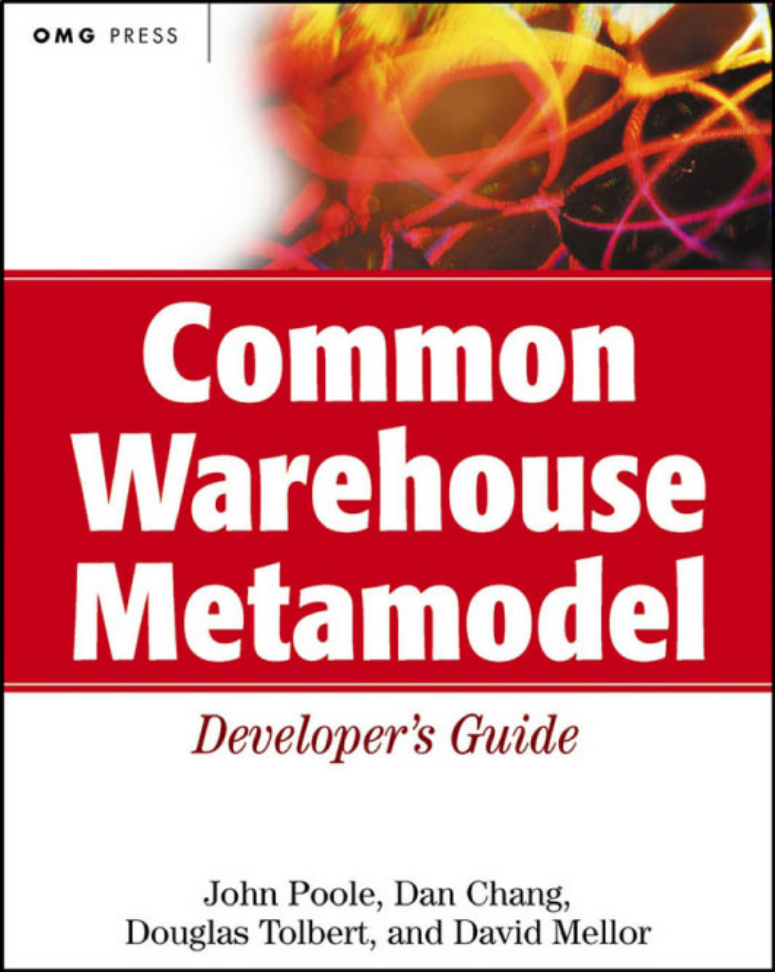
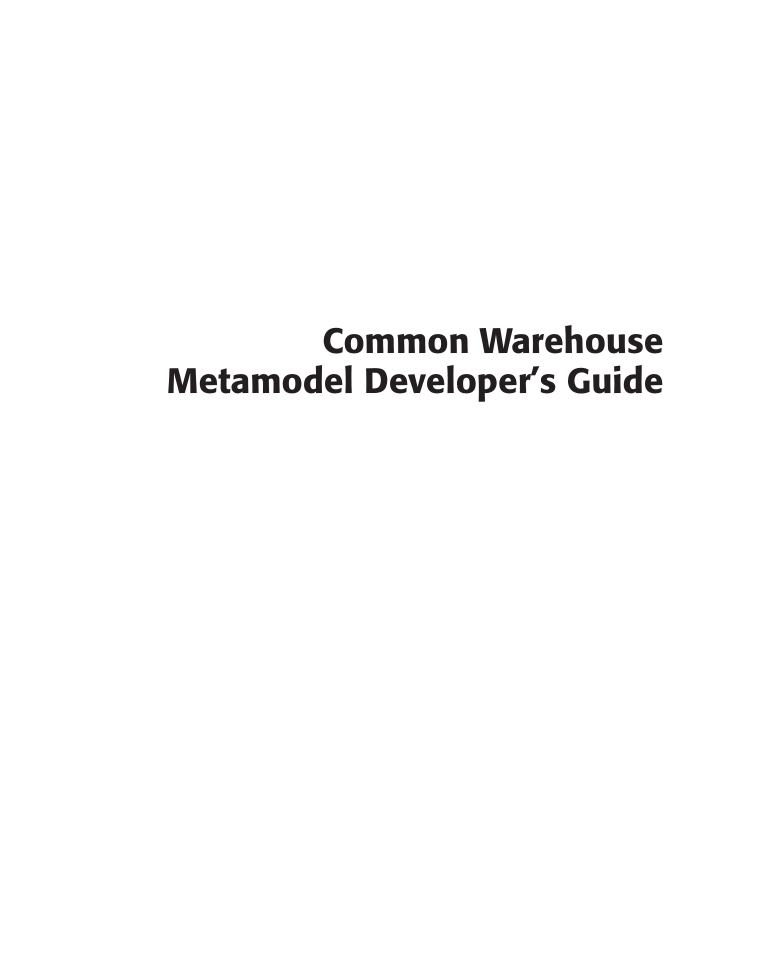

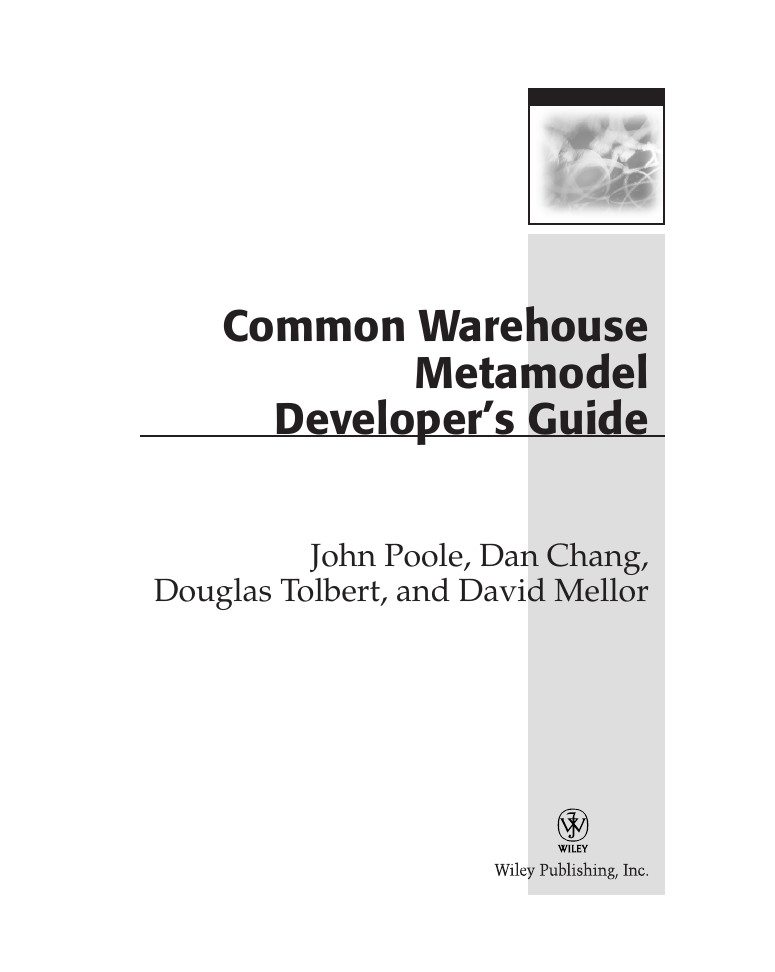
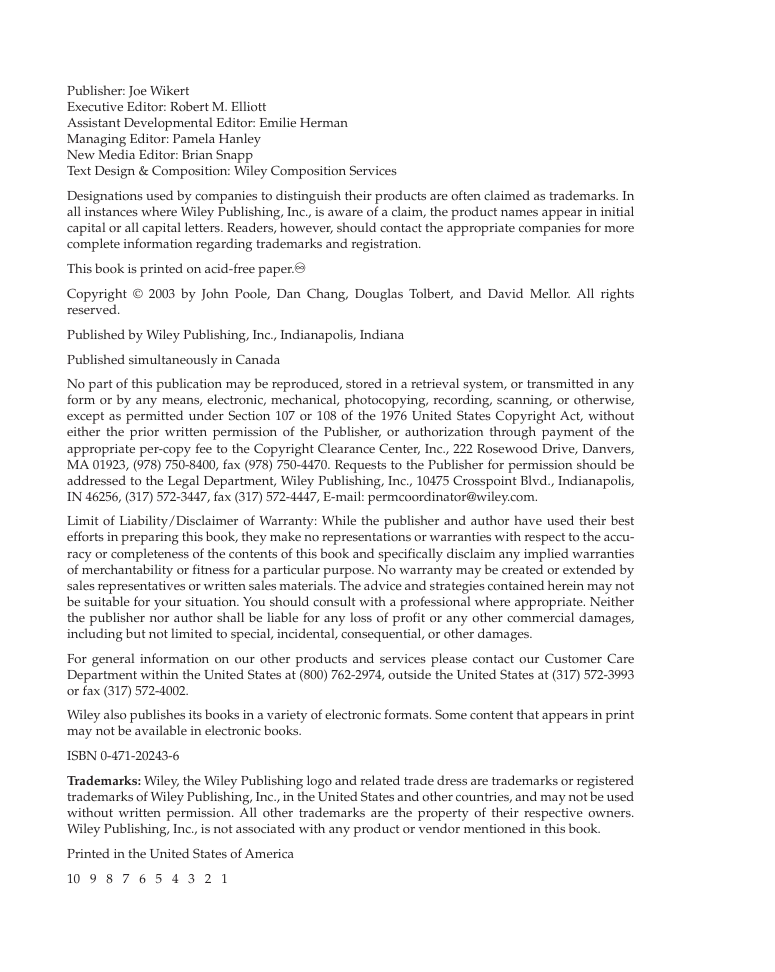
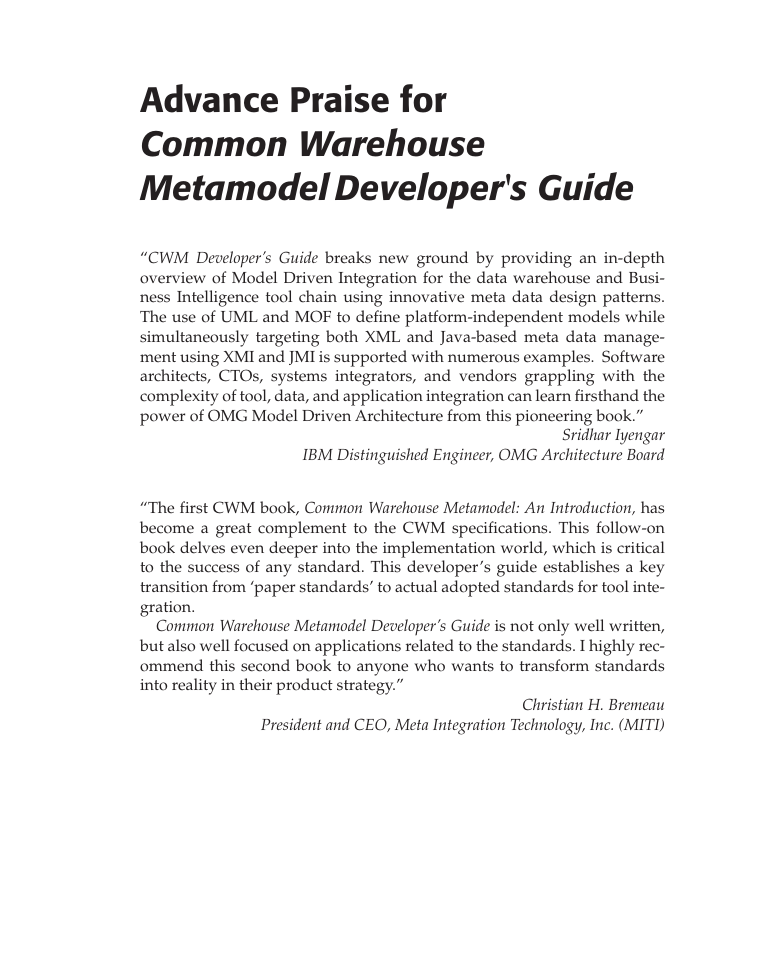
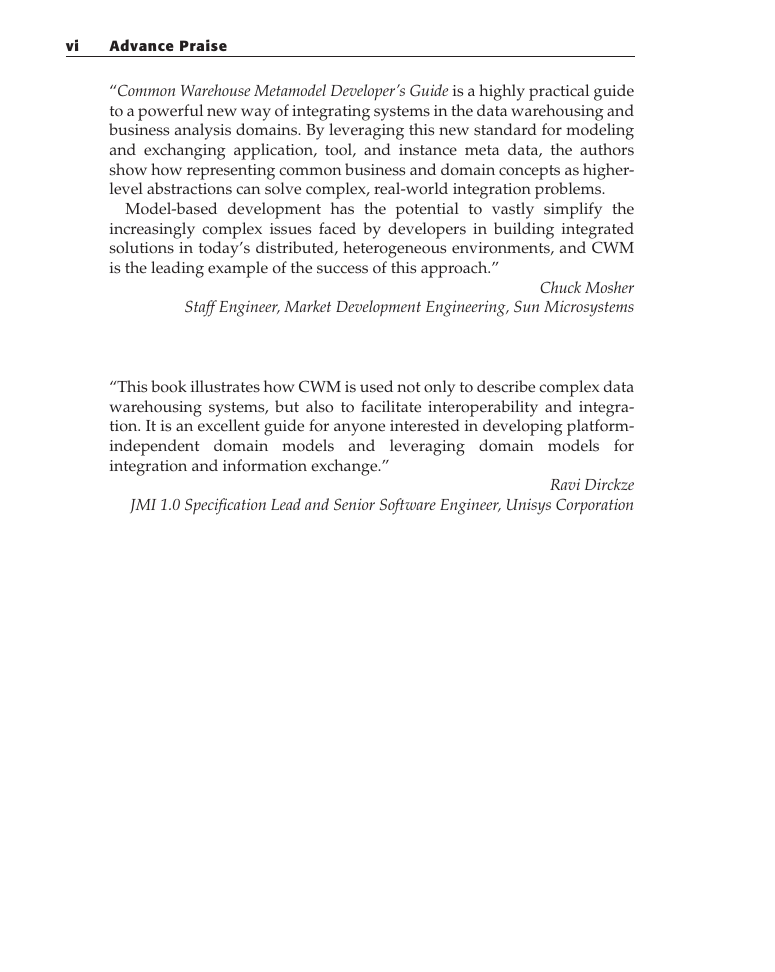
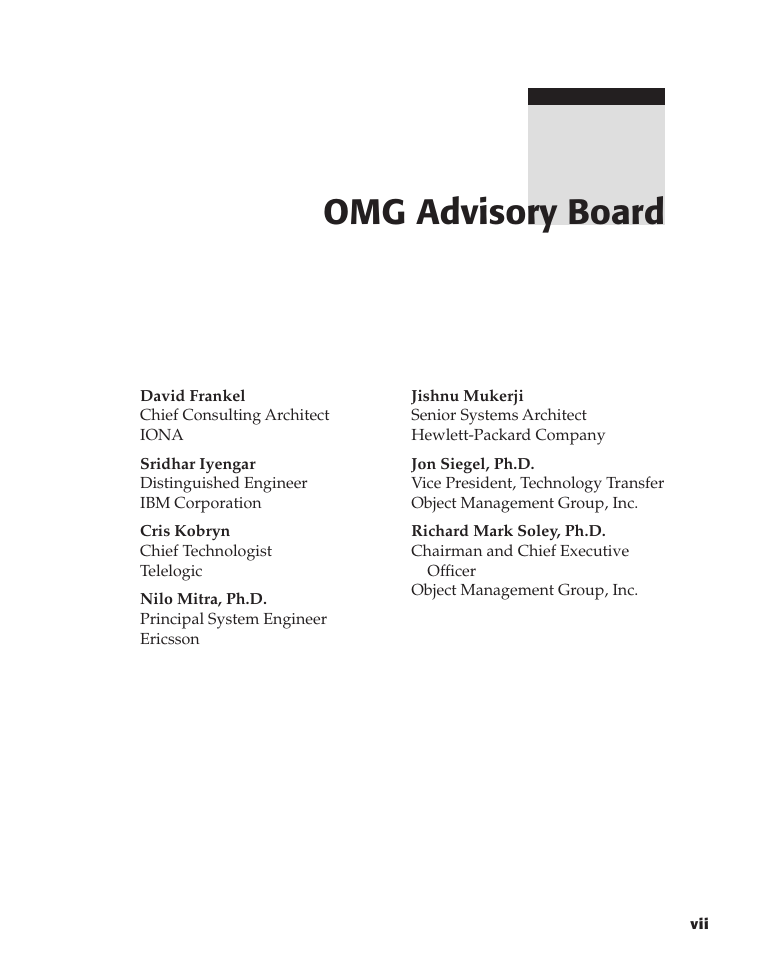








 2023年江西萍乡中考道德与法治真题及答案.doc
2023年江西萍乡中考道德与法治真题及答案.doc 2012年重庆南川中考生物真题及答案.doc
2012年重庆南川中考生物真题及答案.doc 2013年江西师范大学地理学综合及文艺理论基础考研真题.doc
2013年江西师范大学地理学综合及文艺理论基础考研真题.doc 2020年四川甘孜小升初语文真题及答案I卷.doc
2020年四川甘孜小升初语文真题及答案I卷.doc 2020年注册岩土工程师专业基础考试真题及答案.doc
2020年注册岩土工程师专业基础考试真题及答案.doc 2023-2024学年福建省厦门市九年级上学期数学月考试题及答案.doc
2023-2024学年福建省厦门市九年级上学期数学月考试题及答案.doc 2021-2022学年辽宁省沈阳市大东区九年级上学期语文期末试题及答案.doc
2021-2022学年辽宁省沈阳市大东区九年级上学期语文期末试题及答案.doc 2022-2023学年北京东城区初三第一学期物理期末试卷及答案.doc
2022-2023学年北京东城区初三第一学期物理期末试卷及答案.doc 2018上半年江西教师资格初中地理学科知识与教学能力真题及答案.doc
2018上半年江西教师资格初中地理学科知识与教学能力真题及答案.doc 2012年河北国家公务员申论考试真题及答案-省级.doc
2012年河北国家公务员申论考试真题及答案-省级.doc 2020-2021学年江苏省扬州市江都区邵樊片九年级上学期数学第一次质量检测试题及答案.doc
2020-2021学年江苏省扬州市江都区邵樊片九年级上学期数学第一次质量检测试题及答案.doc 2022下半年黑龙江教师资格证中学综合素质真题及答案.doc
2022下半年黑龙江教师资格证中学综合素质真题及答案.doc